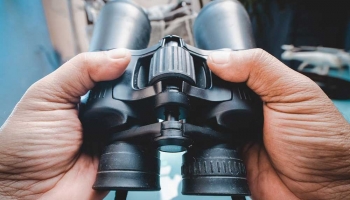What Does 20×50 Mean For Binoculars?
Shopping for binoculars can be overwhelming, especially with the avalanche of data that manufacturers and reviewers provide. However, understanding the various numbers is critical if you want to make a well-informed purchase. For example, what does 20×50 mean for binoculars? Let’s take a closer look at the number x number formula and discuss what it reveals about the optics it describes.
A Common Formula
As you shop for binoculars, you’ll see that each pair has a spec listed in this number x number formula. The first number in this equation indicates the magnification power that the optics provide. The second number indicates the objective lens diameter for the binoculars. These numbers, taken individually or together, can tell you a lot about the viewing quality of that particular model.
Magnification
The listed magnification power (the first number in the formula) indicates how many times larger an image appears through the ocular lenses than it does with an unaided eye. In the case of the formula 20×50, a pair of binoculars with this magnification would produce an image that is 20 times larger than what you would see with your eyes alone.
Keep in mind that the more an image is magnified, the harder it will be to keep that image steady. Many users find a magnification of 8 or 10 to be the highest that they can keep steady with their hands before a tripod or another type of platform is needed. A pair of binoculars with 20 times magnification would likely benefit from a tripod.
Objective Lens Diameter
A binocular’s objective lens diameter (listed in millimeters) shows the width of the front lenses (the side closest to the object being viewed). These lenses are used to gather light photons. Our eyes use light photons to see. As an objective lens gathers light, it provides a clearer, sharper image. The wider the lens, the more light that can be gathered.
Of course, larger lenses will also mean more bulk and weight are added to the binoculars. A pair of binoculars with 50mm object lenses will gather a decent amount of light photons, but will be larger and heavier.
Seeing It All Together
A pair of 20×50 binoculars will magnify 20 times and employ objective lenses of 50mm diameter. These binoculars will provide an exit pupil of 2.5mm (objective lens divided by magnification). An exit pupil of this size provides plenty of daylight power with decent cloudy or late-afternoon visibility. You might want to add a tripod for stability, however.
A good place to compare products and features can be found here. Remember to keep the number x number formula in mind as you research and try to match it to your viewing needs!




